Test Altospam’s solutions!
Thousands of companies, CTOs, CIOs, CISOs and IT managers already trust us to protect their e-mail against phishing, spear phishing, ransomware, …
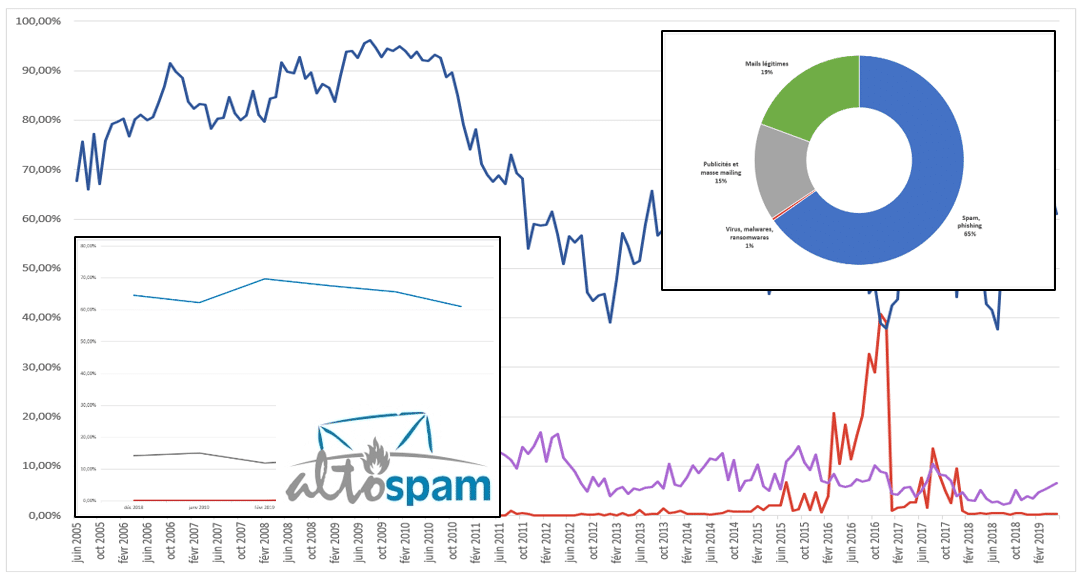
Since 2005, we’ve been keeping statistics on the rate of spam, phishing and malware processed via our Altospam email protection platforms. This article looks at a few statistics, such as the evolution of spam and virus rates, the number of spam messages transmitted by botnets and the rate of advertising in emails. This data is useful not only for sizing our architecture, but also for forecasting our research sectors, given the regular evolution of spamming techniques.
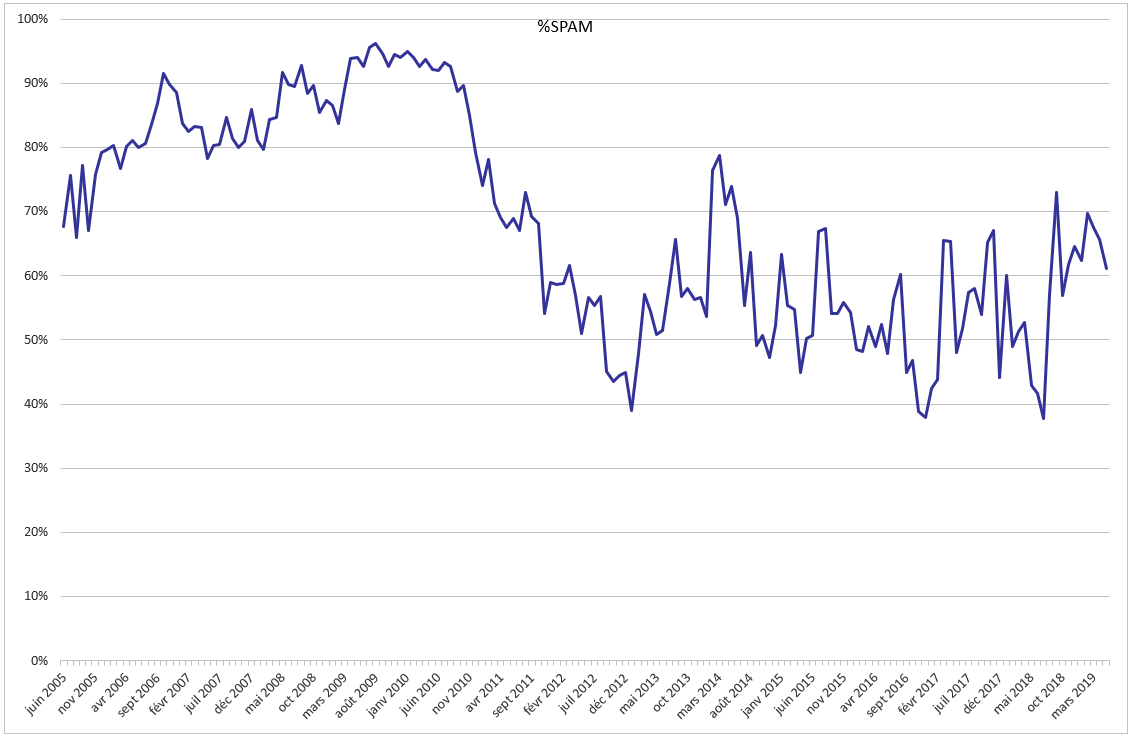
The graph above shows the rate of spam and of
phishings on the total number of emails received by all our customers
between 2005 and May 2019. In 2005, the average spam rate was around 70%.
of the total number of emails received. In 2009, a significant peak was reached
was close to 96% spam in July and August. Thanks to the dismantling of
botnets, the number of spam messages fell sharply between 2010 and 2012. Spam
were fewer in number, but became more complex. Since 2013, we have seen a
fluctuating spam rates, averaging between 50% and 60%,
and occasionally approaches 70-80% of mail traffic. The average over the1st
half-year 2019 being 65.26%.
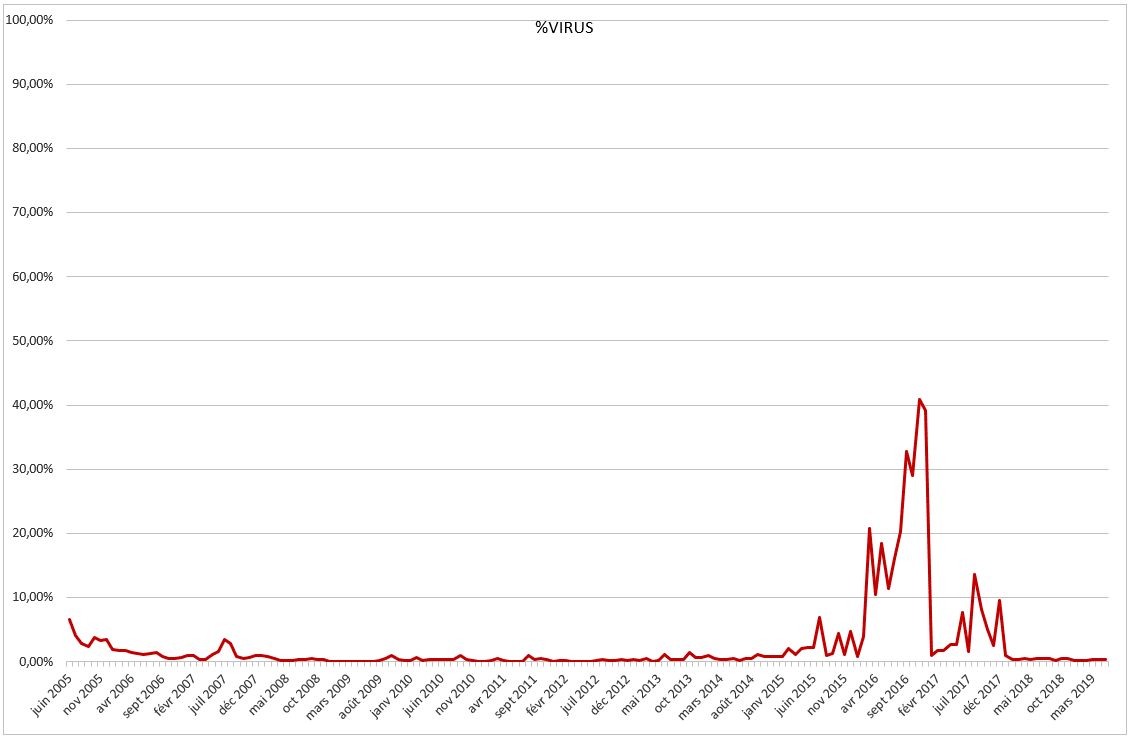
In the case of malware, the graph above shows the following on the same period the rate of malware received, including viruses, ransomware and other malware. The average rate of e-mails received containing a virus is 2.48% of traffic, but as a general rule the number of mails containing malware often remains below 0.5%. The average since for example, is 0.31%. In 2010, it was 0.34%.
We’re clearly seeing the ransomware spike of 2016, where the malware rate, including ransomware, rose from 0.73% in January 2016 to rising to 20.74% in March, then 32.77% in September, and peaking at 40.84% in November 2016. That same month, the spam rate fell to exceptionally below at 38.87% of the total number of emails. The waves of ransomware continued in a less brutal fashion in 2017. There are always today, but the mailings are much more targeted and less high-volume, unlike the 2016 waves.
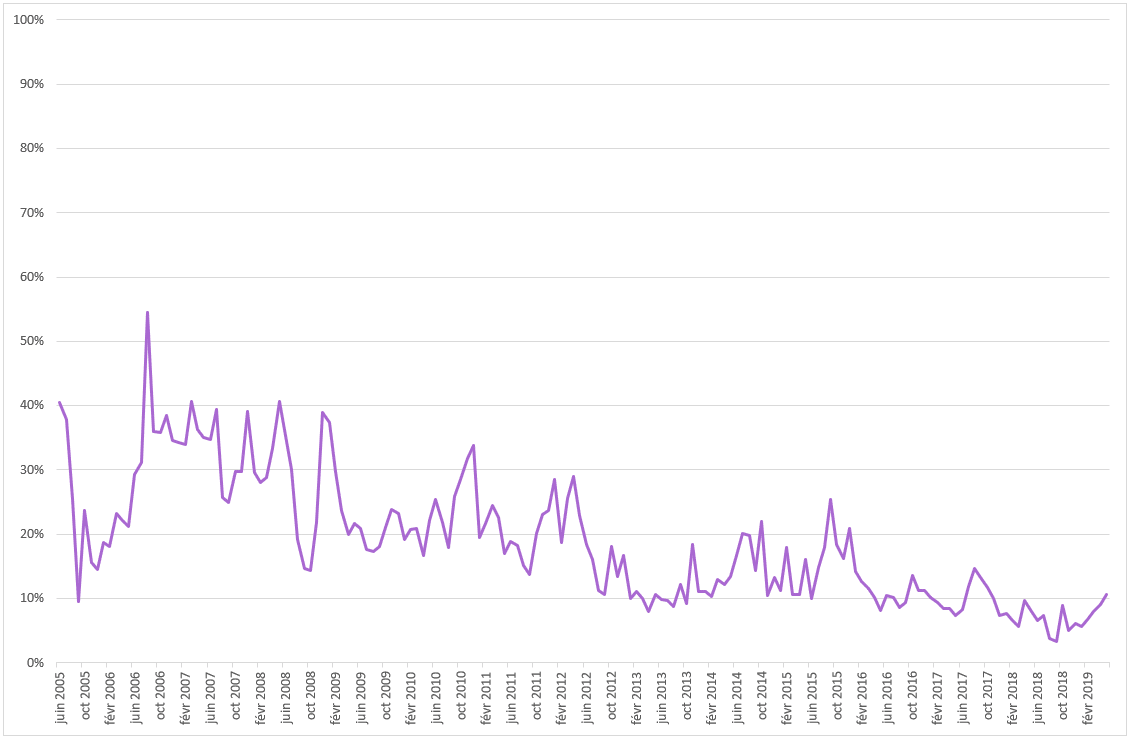
Over the same period, we also studied the ratio of between the number of spam messages from botnets and the total number of spam messages received by our customers. This indirectly represents the quality of spam. sent, because spam passing through botnets is often more “basic” than the others. Since 2005, we have seen a permanent reduction in the number of spam messages sent from botnets. The latter account for less than 10% of spam today, whereas they transmitted up to 50% of volume in 2006.
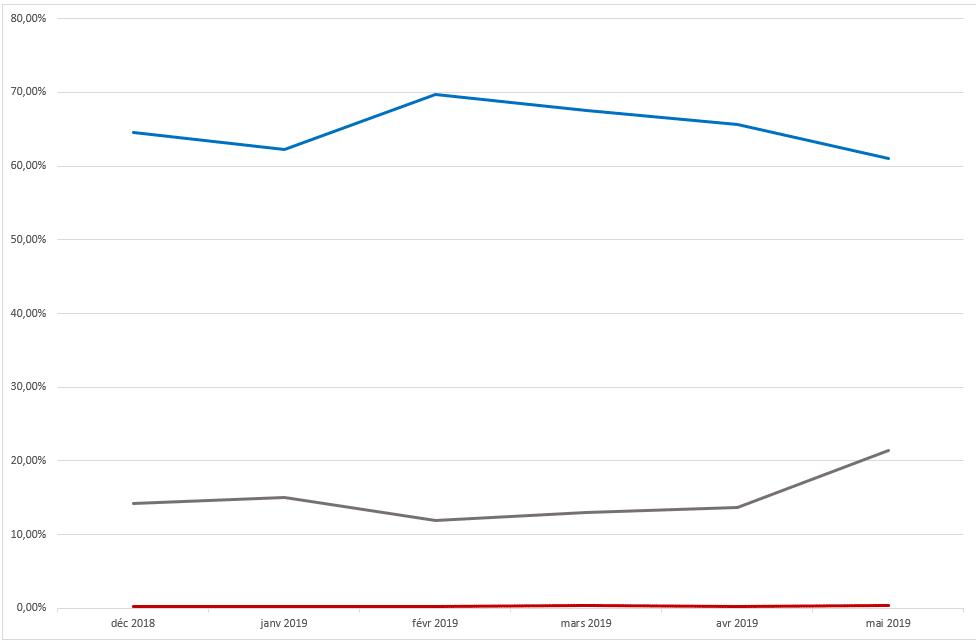
On this last graph, which we have refocused on 2019, we show the proportions of spam, malware and advertising in the emails received by our customers on the same figure. As recently reported, the spam rate for the first 5 months of 2019 is 65.26% (blue curve). The malware rate is 0.31% (red curve), and the advertising rate is precisely 15.00% (gray curve). This means that the rate of legitimate e-mails is just over 19%.
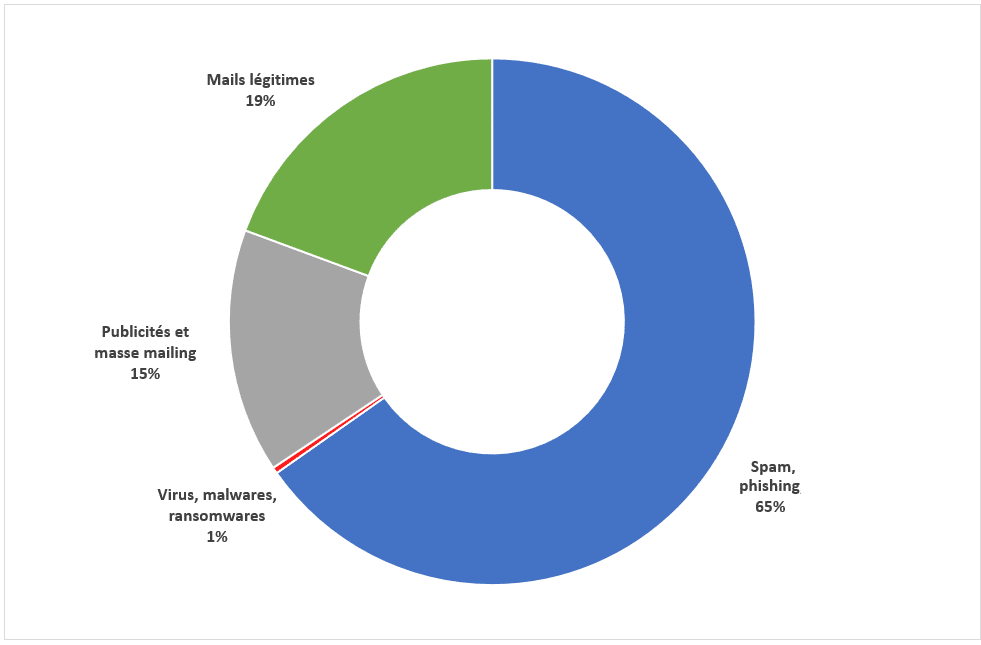
At present, the situation appears to be more or less stable: the malware threat is at its lowest. This is undoubtedly due to the effectiveness of antivirus systems, which can quickly counter every attack. Unless this is the calm before the storm… The flow of spam, on the other hand, remains very high, partly due to the fact that the process relies by definition on the mass of messages sent. Despite a very low return rate, mass spamming remains profitable.
Today’s new threats are changing as they strive to to bypass the protections, they hide behind steps intermediaries. More than ever before, the first line of protection is the spirit. and caution of the user.
Want to try out Altospam’s inbound filtering solution? Visit https://www.altospam.com/fr/test-gratuit.php
Test Altospam’s solutions!
Thousands of companies, CTOs, CIOs, CISOs and IT managers already trust us to protect their e-mail against phishing, spear phishing, ransomware, …